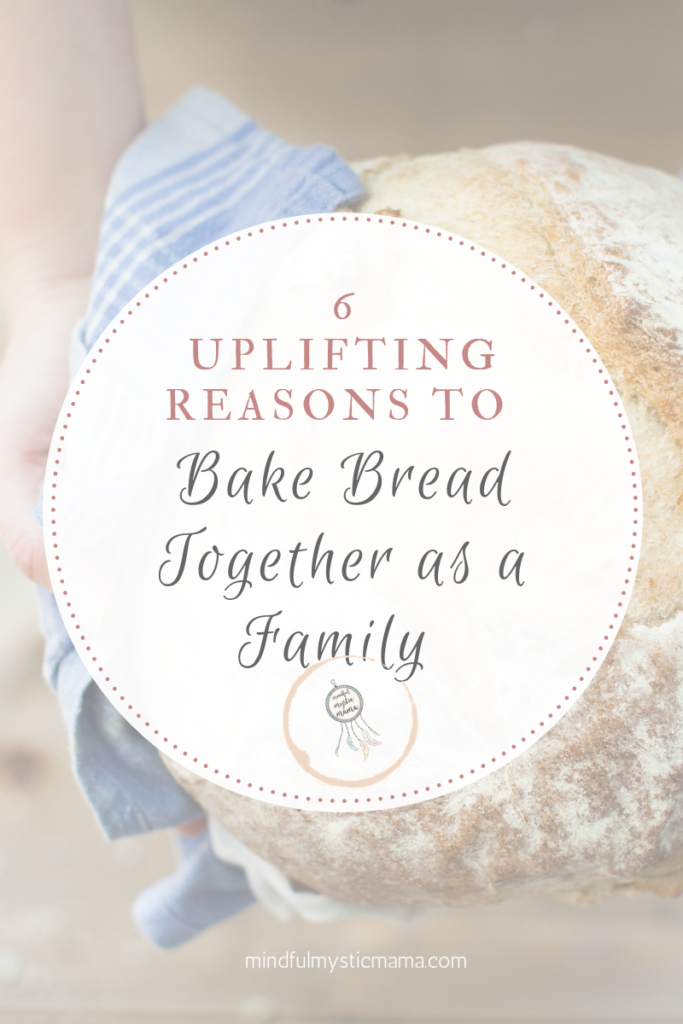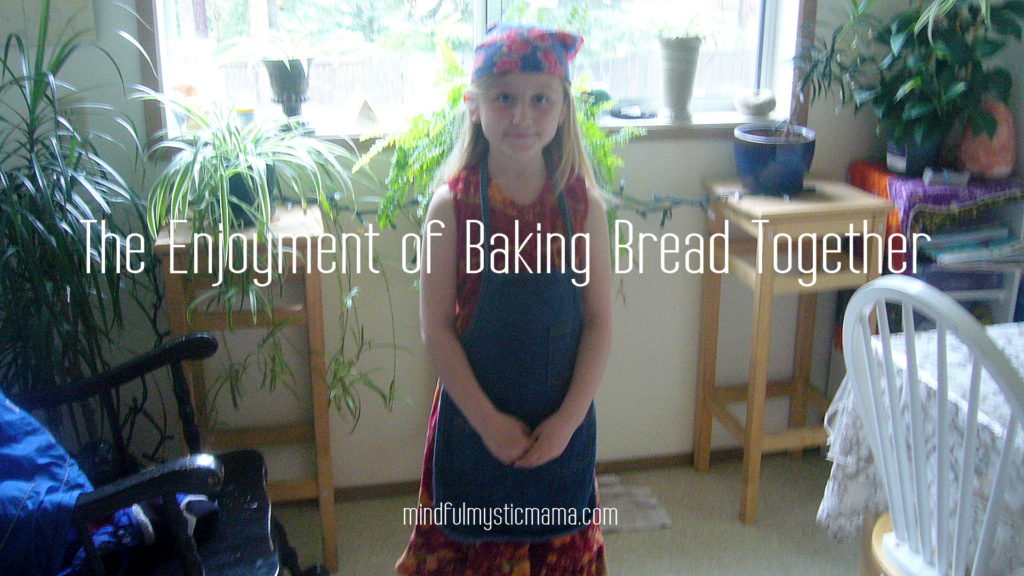
I absolutely adore the experience of baking bread with my children. It’s a cherished activity that not only nurtures our bond but also cultivates a love for the culinary arts at a young age. Witnessing their enthusiasm as they measure ingredients, knead the dough, and shape it into beautiful loaves brings me immeasurable joy.
There’s a magical transformation that occurs when the warmth and aroma of freshly baked bread begin to permeate our home. It’s an enchanting symphony of scents that instantly uplifts our spirits and creates an atmosphere of comfort. The tantalizing fragrance captivates our senses and fills every corner, creating a haven where time seems to slow down.
The act of baking bread is not just about creating sustenance; it’s a labor of love that nourishes both the body and the soul. As we patiently wait for the dough to rise and the loaves to emerge from the oven, a sense of anticipation and contentment fills the air. It’s a testament to the power of simple pleasures and the beauty of the moment.
This shared experience in the kitchen goes beyond the physical act of baking.
Through it, we pass down family traditions and create lasting memories. Together, we learn about patience, perseverance, and the transformative power of teamwork. The sound of laughter and conversation fills the air, creating an atmosphere of love, learning, and togetherness.
And, in a world that often feels chaotic and fast-paced, the process of baking bread offers a respite – a moment of tranquility amidst the hustle and bustle. The rhythmic kneading of the dough and the mindful attention to each step provide a meditative quality. It allows us to be present, to savor the here and now, and to find solace in the simple act of creating something delicious and comforting.
I was raised eating bannock bread, and so, that tradition carries on with my own children. Baking bread with my children has become a cherished tradition, a thread that weaves our hearts together. The sense of accomplishment and satisfaction we feel as we bite into a slice of our freshly baked creation is unparalleled.
It’s a reminder of the love and care we put into every step of the process, and the joy that comes from sharing something homemade with those we hold dear.
Cookbook author and macrobiotic practitioner Wendy Esko makes bread without using commercial yeast. She uses natural leavening in the form of a sourdough starter or no leavening at all; she claims that unleavened bread dough will rise on its own if placed in a warm place for 8-12 hours.
But when she lets her children help her make bread, she says, it never fails to turn out well. When the children help, “they are so happy and really put a lot of happiness into the bread,” she says. Maybe you should try putting some happiness into your bread, too!
Letting your children help you with bread making is enjoyable and fulfilling! Here are some things to look forward to when you bake bread with your children, as well as some ideas on how to make it an even better experience.
Make Science & Math Fun with Bread Baking!
Baking bread with your children can be an incredibly rewarding and educational experience. Not only does it provide a fun and hands-on activity, but it also serves as a fantastic opportunity to teach your little ones about various scientific principles.
One of the key concepts that can be explored while baking bread is leavening. By mixing yeast with warm water and sugar, you can demonstrate how yeast feeds on the sugar and produces carbon dioxide gas, which in turn causes the dough to rise. This process of fermentation is a great way to introduce your children to the fascinating world of microbiology.
Measuring ingredients for bread-making can be a fantastic practical application of mathematics. From counting the number of cups of flour to measuring the precise amount of yeast, every step in the recipe involves some form of measurement. This hands-on approach to math not only helps develop essential skills but also shows your children that math has real-world applications.
As you progress with the bread-making process, you can also delve into the chemistry behind baking.
Kneading the dough helps develop gluten, a protein that contributes to the bread’s structure. You can explain how the kneading process aligns the proteins and creates an elastic network that traps carbon dioxide, resulting in a fluffy and delicious loaf of bread.
And, as you watch the bread rise and bake in the oven, you can discuss the physical and chemical changes that occur during the baking process. The heat causes the yeast cells to die, the gluten to set, and the starches to gelatinize. Explaining these transformations will help your children understand how different ingredients and processes work together to create a final product.
Baking bread with your children is not just about creating tasty treats. It’s an enriching experience that combines elements of science, math, and chemistry!
Enhance Your Communication & Interaction
Naturally, spending quality time with your kids is not only important but also highly beneficial for their overall development. Engaging in activities together, such as baking bread, not only allows you to bond with your children but also provides an opportunity for open communication and meaningful conversations. The kitchen becomes a space where everyone can come together, share their thoughts and ideas, and create lasting memories.
When involving your kids in the process of baking bread, you can assign each child a specific job or task, allowing them to actively participate and feel a sense of ownership. This not only teaches them the value of responsibility but also highlights the importance of teamwork and cooperation within the family unit. They will learn that every role, no matter how small, contributes to the final outcome, emphasizing the significance of everyone’s contribution.
The kitchen is a hub of valuable life lessons waiting to be taught.
As you bake bread together, you can teach your children about patience and perseverance. Bread-making requires following a recipe, measuring ingredients precisely, waiting for dough to rise, and understanding the importance of time management. These are all vital skills that will serve them well in various aspects of their lives.
Not to mention, the process of bread-making can also spark curiosity and conversation about science and nutrition. You can discuss how yeast works and the chemical reactions that occur during the fermentation process. This encourages learning through hands-on experience, making the kitchen a fun and educational environment for your kids.
In addition to the practical skills and knowledge gained, baking bread together fosters a sense of togetherness and strengthens the bond between family members. The shared experience of creating something delicious from scratch instills a sense of pride and accomplishment in both children and adults alike. It’s a powerful way to create lasting memories and traditions that your kids will cherish as they grow older.
Spending time with your kids in the kitchen while baking bread is not just about the end result of a homemade loaf. It’s an opportunity to teach valuable life lessons, promote effective communication, encourage teamwork, and create beautiful memories. So, put on your aprons, gather your little ones, and let the baking adventure begin!
Bake Bread Together for a Healthy Lifestyle
If you find yourself facing the challenge of getting your children to eat healthier bread, especially when they seem to prefer the conveniently squeezable white bread from the store, I have a wonderful suggestion for you. Why not involve your kids in the process of making a homemade whole grain loaf? Not only will this be a fun and engaging activity, but it can also significantly increase the chances of them actually eating and enjoying the bread they have helped to create.
Children have a natural curiosity and love for hands-on experiences, which makes baking with them an ideal way to introduce healthier alternatives into their diet. By involving them in the bread-making process, you are empowering your children to develop a deeper appreciation for the food they eat and giving them an opportunity to understand the importance of making nutritious choices.
There are numerous benefits to making whole grain bread at home with your little ones.
Firstly, it allows you to control the ingredients and ensure that you are using wholesome, high-quality grains. This way, you can avoid any unnecessary additives or preservatives commonly found in store-bought bread.
Secondly, the act of preparing the dough, kneading it, and watching it rise can be a captivating and educational experience for children. It provides them with a tangible connection to the food they consume, fostering a sense of accomplishment and pride. By actively participating in the process, they will have a better understanding of the effort and care that goes into preparing a homemade loaf of bread.
Making bread together can also serve as a bonding opportunity for you and your children. It creates a space for quality time, conversation, and laughter while you work together towards a shared goal. The experience of baking can strengthen your relationship and create lasting memories for both of you.
So, the next time you’re struggling to get your kids to embrace healthier bread options, I encourage you to consider making a whole grain loaf with them. Get them involved in every step of the process, from measuring the ingredients to forming the dough and shaping the loaf. Not only will you be providing them with a delicious and nutritious alternative, but you’ll also be nurturing their culinary skills, fostering healthy habits, and cultivating their love for good food!
Create Heartwarming Family Memories
Creating and cherishing memories is a vital aspect of our lives. Memories have the power to transport us back in time, to relive moments of joy, laughter, and love. They serve as a source of comfort and solace, especially during the challenges and complexities of adulthood. Fond childhood recollections, in particular, hold a special place in our hearts and can bring us immense happiness even years later.
As parents, one of the greatest gifts we can give our children is the opportunity to create beautiful memories. By engaging in activities together, sharing laughter and experiences, we pave the way for a lifetime of cherished moments. These memories become the building blocks of their identity and provide a sense of belonging and security.
Now, if you’re looking for a cookbook that offers more than just recipes, one that encourages a holistic and nourishing approach to food, let me recommend The Nourishing Traditions Cookbook for Children: Teaching Children to Cook the Nourishing Traditions Way. This wonderful book breaks away from the diet fads of today and guides children towards a healthier relationship with food. It not only teaches them essential culinary skills but also emphasizes the importance of consuming nourishing, whole foods.
By incorporating traditional methods and sustainable practices, this cookbook empowers children to appreciate the value of nutrition and the pleasure of preparing and sharing meals.
It fosters a sense of curiosity, creativity, and independence in the kitchen, allowing children to develop a lifelong love for cooking and caring for their bodies.
So, whether you’re a parent seeking to bond with your children through kitchen adventures or looking to instill healthy eating habits from an early age, The Nourishing Traditions Cookbook for Children is a valuable resource. It embraces the magic of cooking, the joy of shared meals, and the creation of lasting memories that will be treasured for years to come!
Remember, life is a collection of moments, and by actively shaping positive experiences and memories, we enrich not only our own lives but the lives of those around us. Embrace the journey, savor each precious memory, and create a legacy of love and happiness.
Make Bread Baking a Family Tradition
One way to preserve the recipes and experiences associated with baking bread is by creating an ‘old fashioned’ recipe card book. Over the years, you can add new recipes to this special book, creating a collection of tried and tested favorites. As your children grow, they can flip through the pages of this book, reminiscing about the times they spent in the kitchen with you, and discovering beloved recipes that they have already tried and loved.
If you’re looking for a resource to enhance your baking adventures with your children, “Baking Bread with Children” by Warren Lee Cohen is a lovely book that can help you share the magic of breadmaking. With its delightful recipes and helpful tips, this book provides not only a guide to baking but also inspires a sense of wonder and creativity in your children.
So gather your little ones, roll up your sleeves, and embark on this beautiful journey of baking bread together. It’s a tradition that can be cherished for generations, creating lasting memories and a love for delicious homemade bread that will always be a part of your family’s story.
Don’t Limit Yourself – Get Creative!
The art of breadmaking offers a magnificent array of possibilities beyond the traditional kneaded loaf. Step into the world of culinary adventure with your children and explore the realm of big, soft pretzels or delectably chewy flatbreads. Let your imagination soar as you create intricate braided loaves, delightful rolls, or irresistible pull-apart “monkey bread.” And don’t limit yourself to savory options – the realm of sweet breads presents a realm of possibilities waiting to be explored.
Indulge in the blissful simplicity of quick breads, where leavening agents other than yeast are used to achieve light and fluffy results. These delightful treats can be sweet or savory, embracing a vast array of flavors and textures. Or perhaps, venture into the realm of the hearty cornbread, a perfect companion to a warm bowl of chili or a comforting addition to any Southern-style feast.
For those seeking a deeper level of bread craftsmanship, the majesty of sourdough awaits. Dive into the world of wild yeast culture and fermentation, allowing the flavors to develop over time, resulting in a complex and tangy loaf that is truly a labor of love.
So, have fun, unleash your creativity, and embark on a journey of culinary delight with your children. Let the aroma of freshly baked bread fill your home, as you experience the joy of breaking bread together and savoring the rewards of your collective efforts. Remember, in the realm of breadmaking, the possibilities are endless, and with each unique creation, you not only nourish your bodies but also create lasting memories with your loved ones. Bon appétit!


Leave a Reply